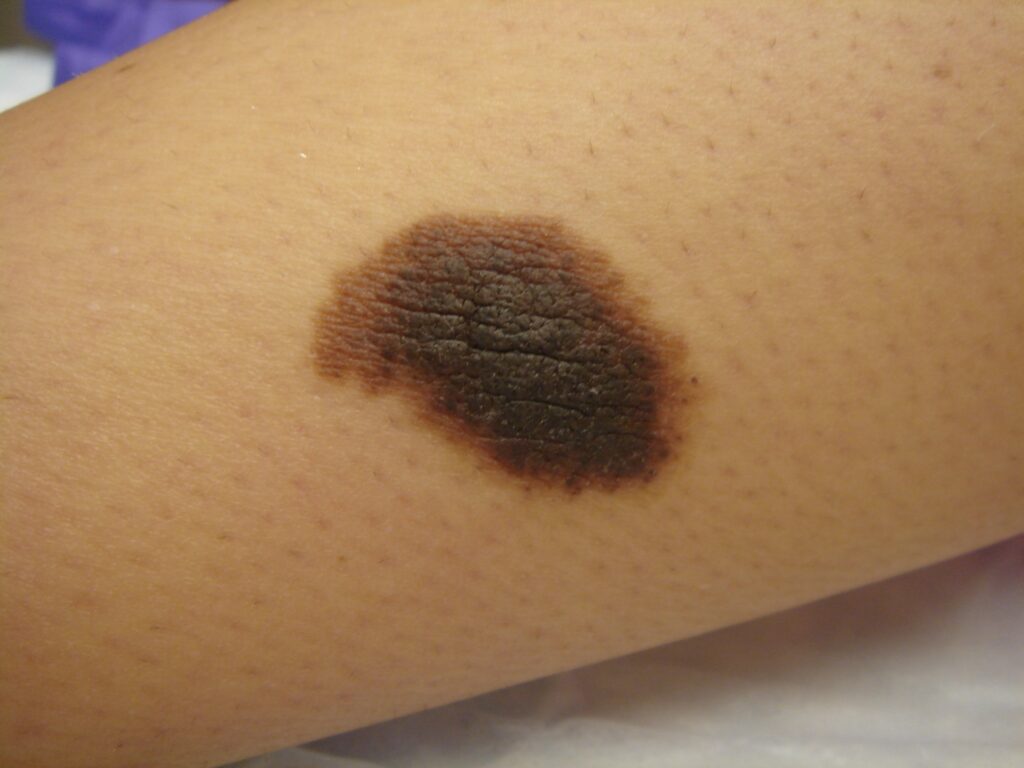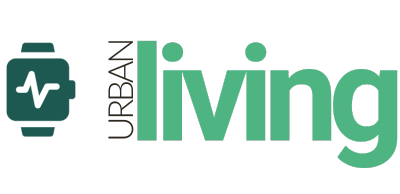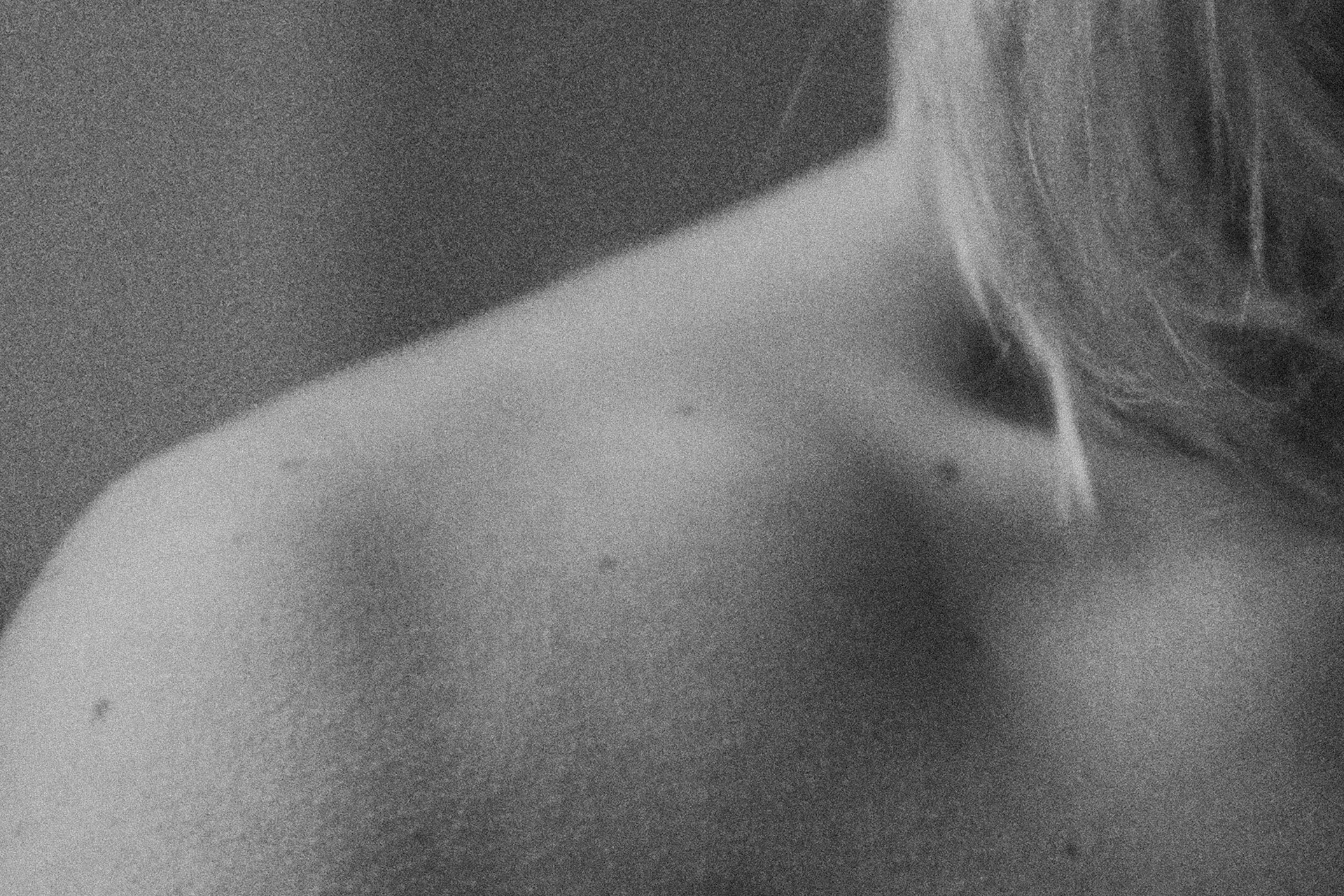Understanding Birthmarks: What They Are and Why They Form
Birthmarks are pigmented or discolored areas of skin that appear at birth or develop shortly thereafter. Despite their name, some birthmarks may become visible within the first few weeks or months of life.
These distinctive skin markings come in various colors, shapes, and sizes, and can appear anywhere on the face or body.
The exact cause of birthmark formation remains largely unknown. While some theories suggest a genetic component that may run in families, most birthmarks occur sporadically without any hereditary pattern.
It’s important to note that birthmarks are not caused by anything the mother did during pregnancy, such as consuming certain foods or engaging in particular activities.
Birthmarks differ from common moles that appear later in life, as true birthmarks are present at or very soon after birth. While many birthmarks are harmless and some fade away naturally with time, others may become more pronounced as a person ages.
Types of Birthmarks
Birthmarks fall into two main categories: vascular birthmarks and pigmented birthmarks. Understanding which type you have is crucial for determining the most effective treatment approach.
Vascular Birthmarks
Vascular birthmarks result from abnormal development of blood vessels in the skin. They typically appear red, pink, or purple in color. Common types include:
1. Port-Wine Stains:

These flat, pink to reddish-purple patches are present at birth and tend to be permanent. If left untreated, they can darken and become thicker over time, sometimes developing bumps or nodules that may cause disfigurement.
Port-wine stains affect approximately 0.3% of newborns and are often found on the face and neck.
2. Hemangiomas (Strawberry Marks):

These are raised, bright red spots that grow rapidly during the first year of life, often faster than the rest of the body. Hemangiomas typically start shrinking by the end of the first year and continue to involute (shrink) at a rate of about 10% per year.
While approximately 50% resolve by age 5 and most clear by age 10, about 40-50% may leave a scar or residual mark.
3. Salmon Patches:

Also known as “stork bites” when on the nape of the neck or “angel kisses” when on the forehead, eyelids, or upper lip, these flat pink marks are found in 25-40% of newborns. Most salmon patches on the face disappear by age 3, though those on the neck often persist.
4. Spider Veins/Spider Naevi:

These consist of a central blood vessel with smaller vessels radiating outward. While usually harmless and primarily a cosmetic concern, they may occasionally be associated with underlying liver disorders.
Pigmented Birthmarks
Pigmented birthmarks occur due to clusters of pigment cells gathered in one area. They typically appear brown, black, blue, or gray in color. Common types include:
1. Congenital Melanocytic Nevi (Moles):

These moles present at birth vary in size from small to giant. Larger ones may carry an increased risk of developing into melanoma, requiring regular monitoring.
2. Café-au-Lait Spots:

These flat, light brown or tan patches can appear alone (usually benign) or in multiples (may be associated with medical conditions). Having six or more café-au-lait spots warrants an assessment by a dermatologist.
3. Mongolian Spots:

These blue-gray patches typically appear on the lower back or buttocks and are more common in children with darker skin tones. They usually fade by school age.
4. Nevus of Ota:

This is a bluish-black or dark brown birthmark commonly seen in people of Asian descent. It typically affects the face, particularly around the eye area. About one-third of patients also have pigmentation in the white part of the eye.
5. Nevus Sebaceous:

Most commonly found on the scalp, this birthmark appears as a hairless patch at birth or in infancy. During adolescence, it typically becomes more pronounced, appearing yellowish, bumpy, or warty.
6. Becker’s Nevus:

This typically appears as a brown patch during the teenage years, sometimes with a rough texture and hair growth. It’s commonly found on the shoulders and back.
When to Consider Birthmark Removal
While many birthmarks are completely harmless, there are several reasons why someone might consider removal:
Medical Reasons
- Potential Health Risks: Some birthmarks, particularly certain types of moles, may have an increased risk of developing into skin cancer. Large congenital moles, for instance, have a higher risk of becoming melanoma.
- Functional Interference: Birthmarks that grow near vital structures may interfere with normal bodily functions. Hemangiomas located near the eyes, mouth, nose, or genitals might impede vision, eating, breathing, or other important functions.
- Complications: Some birthmarks may develop complications like bleeding, ulceration, infection, pain, or swelling. Port-wine stains can thicken over time and potentially cause distortion of facial features or limbs.
- Associated Conditions: Certain birthmarks may be markers for underlying medical conditions. For example, multiple café-au-lait spots might be associated with neurofibromatosis, while port-wine stains on the face might be linked to Sturge-Weber syndrome, which can affect the brain and eyes.
Cosmetic Reasons
Many people seek birthmark removal for aesthetic concerns, particularly when the birthmarks:
- Affect visible areas like the face or hands
- Are large or prominent
- Impact self-confidence and quality of life
- Attract unwanted attention or comments
It’s worth noting that treating birthmarks early, especially vascular ones like port-wine stains, often leads to better outcomes. Smaller birthmarks are generally easier and less expensive to treat, and early intervention may prevent some birthmarks from growing larger or becoming more conspicuous.
Birthmark Treatment Options in Singapore
Singapore offers various advanced treatments for birthmark removal. The appropriate treatment depends on the type, size, location, and depth of the birthmark.
Laser Therapy
Laser treatment is the gold standard for many types of birthmarks, particularly vascular ones. Singapore clinics offer several sophisticated laser technologies:
- Pulsed Dye Laser (PDL): The vBeam Perfecta with 595nm wavelength is particularly effective for vascular birthmarks like port-wine stains. This FDA-approved treatment selectively targets blood vessels without damaging surrounding tissue.
- PicoWay and PicoSure Lasers: These advanced picosecond lasers are excellent for pigmented birthmarks. They deliver ultra-short pulses of laser energy that break down pigment particles into smaller fragments, which the body can then eliminate naturally.
- Nd:YAG Laser: The long-pulse Nd:YAG laser is effective for treating thick port-wine stains and deep vascular malformations.
Laser treatment may require multiple sessions depending on the birthmark’s characteristics. For port-wine stains, early treatment (even in infancy) tends to yield better results as the birthmark is thinner and more responsive to laser therapy.
Medications
- Propranolol: This beta-blocker medication has become the first-line treatment for problematic hemangiomas. It works by reducing the size and appearance of hemangiomas and preventing further growth by shrinking blood vessels.
- Timolol: A topical beta-blocker that can be applied directly to smaller hemangiomas.
- Corticosteroids: These can be either injected directly into the birthmark or prescribed as oral medication to help shrink certain types of birthmarks and prevent further growth.
Surgical Removal
Surgery may be recommended when:
- Other treatments have failed
- The birthmark is large or raised
- There’s a concern about potential malignancy (especially for certain types of moles)
Surgical options include:
- Excision: Complete removal of the birthmark using a scalpel, often followed by closure with stitches. Large birthmarks may require removal in sections over multiple appointments.
- Tissue Expansion: For large birthmarks, this technique stretches the surrounding normal skin to provide enough tissue to cover the area after birthmark removal, reducing scarring.
- Plastic Surgery: This may be necessary for hemangiomas that have caused deformation of the skin, to improve appearance and prevent further complications.
Sclerotherapy
This treatment involves injecting a solution directly into vascular malformations to shrink abnormal blood vessels. It’s particularly useful for deeper vascular birthmarks that laser treatment cannot effectively reach.
What to Expect During Birthmark Removal Procedures
Laser Treatment Process
- Consultation and Assessment: Your doctor will examine the birthmark and may perform a test patch to determine the most effective laser settings.
- Preparation: Special protective eyewear will be provided. For comfort, a topical anesthetic cream may be applied one hour before treatment, especially for larger areas or treatments on children.
- Treatment: A handheld device delivers laser pulses to the birthmark. Each pulse feels briefly like a rubber band snapping against the skin.
- Immediate After-Effects: The treated area typically turns dark gray or appears bruised immediately after laser treatment. This bruising effect can last up to two weeks as the body removes the targeted blood cells.
- Recovery: The treated area may feel hot like a sunburn for several hours. Cooling with ice packs or cold compresses helps alleviate discomfort. Occasionally, a thin scab may form and fall off within two weeks.
Post-Treatment Care
For the first 3-4 days after laser treatment:
- Avoid hot water on the treated area
- Stay away from hot environments like saunas or spas
- Wash gently with lukewarm water, avoiding soaps and friction
- Minimize sun exposure
- Apply moisturizer gently if needed
After the initial recovery period, use sunscreen when outdoors. Avoid excessive sun exposure for at least three months to prevent hyperpigmentation (brownish discoloration) of the treated area.
Results and Expectations
Results vary depending on the type of birthmark and treatment method:
- Port-Wine Stains: Most patients achieve at least 75% reduction in redness after a complete course of laser treatment (typically 4-6 sessions). While the treated area may not perfectly match the surrounding skin, most patients require little to no makeup coverage afterward.
- Hemangiomas: About 70% resolve naturally by age 7, with 50% fading by age 5. Those that don’t respond to medications or cause complications may require laser or surgical intervention.
- Pigmented Birthmarks: Treatment success depends on the depth of pigmentation and birthmark type. Multiple sessions of pigment-specific lasers can significantly lighten many pigmented birthmarks.
It’s important to understand that while treatments can significantly improve the appearance of birthmarks, complete removal with perfect skin matching is not always possible. Factors affecting treatment outcomes include:
- The type and size of the birthmark
- Location on the body
- Skin type (darker skin may have less favorable results with some laser treatments)
- Age at treatment initiation (earlier treatment often yields better results)
Costs of Birthmark Removal in Singapore
Treatment costs vary widely depending on:
- The type of birthmark
- Size and location
- Treatment method
- Number of sessions required
At established medical centers in Singapore, laser treatment sessions typically range from S$200 to S$2,500 per treatment. Most patients require multiple sessions (typically 4-6) for optimal results.
For complex cases requiring surgery or combination therapies, costs will be higher. Many clinics offer package pricing for multiple sessions.
It’s advisable to check if your health insurance covers birthmark removal, as coverage typically depends on whether the procedure is deemed medically necessary or purely cosmetic.
Choosing a Specialist in Singapore
For birthmark removal, it’s crucial to consult with experienced specialists who can accurately diagnose your birthmark and recommend appropriate treatment. In Singapore, you might consider:
- Dermatologists: Skin specialists with expertise in laser treatments and medical management of birthmarks.
- Plastic Surgeons: Particularly for birthmarks requiring surgical intervention or those in aesthetically sensitive areas.
- Vascular Anomalies Specialists: For complex vascular birthmarks, especially those that might be part of a syndrome or affect internal structures.
Look for specialists who:
- Have specific experience with your type of birthmark
- Use advanced and FDA-approved technologies
- Provide clear expectations about results
- Offer comprehensive care plans including follow-up
FAQs About Birthmark Removal in Singapore
Are birthmarks dangerous?
Most birthmarks are benign and pose no health risks. However, certain types may require monitoring:
- Large congenital moles have a slightly increased risk of developing melanoma
- Port-wine stains on the face may be associated with Sturge-Weber syndrome
- Multiple café-au-lait spots might indicate neurofibromatosis
- Some hemangiomas can interfere with vision, breathing, or other functions if located in sensitive areas
At what age should birthmark removal treatment begin?
The optimal timing depends on the type of birthmark:
- For port-wine stains, early treatment (even in infancy) often yields better results
- Hemangiomas are typically observed first, as many resolve naturally; treatment is started if they cause complications or grow rapidly
- For pigmented birthmarks, treatment timing depends on type, location, and potential for malignancy
- Nevus sebaceous is often removed during or after adolescence when it becomes more prominent
How painful is birthmark removal?
Pain levels vary by treatment method and individual pain tolerance:
- Laser treatments feel like quick rubber band snaps against the skin
- Most adults tolerate treatment without anesthesia, though topical numbing creams are commonly used
- Children and infants may require sedation or general anesthesia for extensive procedures
- Post-treatment discomfort is usually minimal and can be managed with cooling measures
How many treatment sessions will I need?
This varies widely depending on:
- The type, size, and color of the birthmark
- The chosen treatment method
- Individual response to treatment
As a general guideline:
- Small vascular birthmarks might require only 1-3 sessions
- Port-wine stains typically need 4-6 sessions or more
- Pigmented birthmarks may require multiple sessions spaced several weeks apart
- Some birthmarks may need ongoing maintenance treatments
Are there any side effects or risks associated with birthmark removal?
Potential side effects depend on the treatment method:
For laser treatments:
- Temporary bruising, swelling, and redness
- Possible light or dark skin discoloration (usually temporary)
- Rare scarring or skin texture changes
- Potential hyperpigmentation if the treated area is exposed to sun
For surgical removal:
- Scarring (though techniques minimize this)
- Infection risk
- Changes in skin sensation
Will the birthmark come back after removal?
For most properly treated birthmarks, recurrence is uncommon. However:
- Some vascular birthmarks may partially return if all abnormal blood vessels aren’t completely treated
- Certain pigmented birthmarks might show signs of returning if deep pigment cells remain
- Hemangiomas that have naturally resolved rarely recur
Can I use makeup to cover my birthmark while undergoing treatment?
Yes, specialized medical-grade makeup can safely cover birthmarks between treatment sessions. Products like Dermablend and Covermark are designed specifically for this purpose. However, avoid applying makeup on freshly treated areas until healing is complete (typically 1-2 weeks after treatment).
Is birthmark removal covered by insurance in Singapore?
Coverage depends on:
- Whether the removal is deemed medically necessary or purely cosmetic
- Your specific insurance policy
- The type of birthmark and associated risks
Procedures to remove birthmarks that interfere with bodily functions or have potential health risks are more likely to receive coverage than purely cosmetic removals. Check with your insurance provider for specific details.
What happens if I choose not to remove my birthmark?
The consequences vary by birthmark type:
- Many birthmarks remain stable with no health concerns
- Some, like hemangiomas, may resolve naturally
- Port-wine stains typically darken and may thicken over time
- Certain moles should be monitored for changes that might indicate skin cancer
- Some birthmarks associated with syndromes may require medical monitoring regardless of cosmetic concerns
How do I prepare for a birthmark removal procedure?
General preparation guidelines include:
- Avoiding blood-thinning medications and supplements before treatment (if advised by your doctor)
- Staying out of the sun and avoiding tanning before procedures
- Arriving with clean skin free from makeup, lotions, or creams
- For children, bringing comfort items and discussing age-appropriate explanations
- Following specific pre-procedure instructions from your specialist
Conclusion
Birthmark removal in Singapore offers advanced options for both medical and cosmetic concerns. With proper specialist consultation, most birthmarks can be significantly improved or removed using the latest technologies. While perfect results cannot always be guaranteed, early intervention and appropriate treatment selection provide the best chances for optimal outcomes.
When considering birthmark removal, consult with experienced specialists who can provide personalized advice based on the specific characteristics of your birthmark. Remember that while some birthmarks pose potential health concerns, many are completely harmless, and the decision to pursue treatment should balance medical needs with personal preferences.

